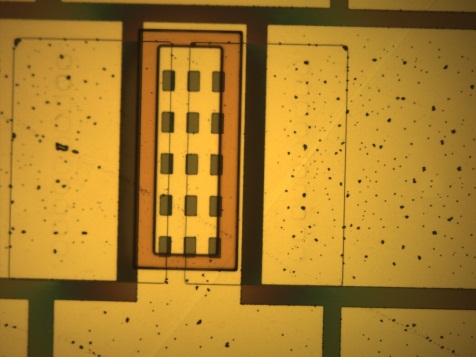New Electronics Can Withstand Bodily Fluids

Electronics and bodily fluids don't mix well. But new technology enables electronic devices to function in direct contact with tissues inside the body. The technology could allow scientists to make sensors that detect the early stages of organ transplant rejection, or create artificial nerves, researchers say.
Of course, many electronic devices already reside in the body — pacemakers, for example. But their electronics don't come in direct contact with bodily fluids because they are enclosed in hermetically sealed stainless steel and sprayed with chemicals that inhibit the body's immune response (which would otherwise reject them).
"What we're doing here is [developing] electronics working in concert with the body," study researcher Paul Berger, an electrical and computer engineer at Ohio State University in Columbus, told LiveScience. One of these is a protein sensor that "could be a sort of canary in a coal mine for transplant rejection," Berger said. [5 Crazy Technologies That Are Revolutionizing Biotech]
The majority of electronics contain silicon, the element used in the semiconductors. Silicon is cheap and nontoxic, but the electrolytes inside the body interfere with silicon circuits. Sodium and potassium ions — two of the most common electrolytes in the body — can seep into silicon transistors, causing the sensor signals to drift. "They slosh around inside the transistor, so nothing is really stable," Berger said. The ions are "an absolute bane for silicon microelectronics," he said.
To get around the problem, Berger and his colleagues developed a protective coating for silicon bioelectronics. They placed electronic circuits covered with this coating in a solution that mimics the chemical environment inside the body and soaked them for 24 hours. When the researchers removed the circuits and tested them, the circuits functioned normally, the group reported in March in the journal Electronics Letters.
This new coating technology makes it possible to create devices that could, for example, detect organ transplant rejection. During the early stages of rejection, the body produces specific proteins that signal inflammation. A silicon sensor, mounted on a needle, could be inserted near the site of the organ transplant to detect these proteins, Berger said. He said he has received funding from a seed grant to build such a sensor.
Some of Berger's colleagues have already built a working sensor, but one that's not made of silicon. One of these sensors, which contains a single transistor, costs about $6 to $10. By contrast, a computer chip with 20 billion silicon transistors costs about $20, Berger said. So the technology is viable, but a silicon version would be much easier to commercialize, Berger said.
Sign up for the Live Science daily newsletter now
Get the world’s most fascinating discoveries delivered straight to your inbox.
In addition to biosensors, Berger envisions making coated polymer semiconductors that could function as artificial nerves to replace damaged or diseased ones in the body.
Follow Tanya Lewis on Twitter and Google+. Follow us @livescience, Facebook & Google+. Original article on LiveScience.com.










